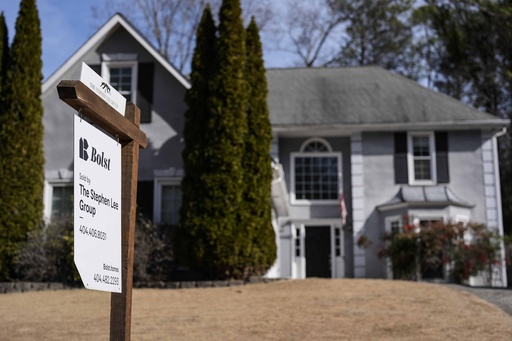Sales of previously owned homes in the U.S. experienced a notable increase in November, marking the fastest growth since March. This uptick is largely attributed to a greater variety of homes available for sale, even as mortgage rates continued to rise in most cases.
According to the National Association of Realtors, existing home sales climbed 4.8% from October, reaching a seasonally adjusted annual rate of 4.15 million. In comparison to November of the previous year, sales surged by 6.1%, representing the most significant year-over-year increase since June 2021. This recent sales figure surpassed the 4.1 million rate that many economists had anticipated, based on estimates from FactSet.
The median sales price of homes nationwide also saw an annual increase for the 17th straight month, rising by 4.7% to $406,100. However, despite this monthly rise, existing home sales remain lower than last year’s levels, which hit a nearly three-decade low.
Lawrence Yun, the chief economist at NAR, pointed out that it seems unlikely that home sales will match last year’s total, suggesting that 2023 is on track to record the lowest sales figures since 1995. After seeing a consistent slump since 2022 due to rising mortgage rates that began climbing from historic lows, the U.S. housing market continues to be impacted by a shortage of available homes for sale. As a result, home prices have increased significantly—up 50% from the levels recorded in 2019.
Mortgage rates this year have seen a decline after peaking at nearly 8% for a 30-year home loan, marking the highest rate in 23 years as of October 2023. However, this decrease hasn’t been sufficient to encourage many prospective buyers. Following a lowering of interest rates by the Federal Reserve for the first time in over four years, the average mortgage rate dropped to just above 6% in September, only to rise once again, reaching 6.6% last week according to Freddie Mac.
The sales figures from last month likely reflect contracts finalized in September and October when mortgage rates were more favorable. Looking ahead to the next year, the future of mortgage rates seems uncertain. Predictions from various economists suggest that the average rate for a 30-year mortgage may decrease, yet it is expected to remain above the 6% mark overall.
Several factors, including the performance of U.S. 10-year Treasury bond yields, affect mortgage rates, which lenders reference when pricing home loans. A significant surge in bond yields occurred after the Federal Reserve indicated that it would likely implement fewer interest rate reductions than previously foreseen.
For homebuyers who are prepared to make a purchase, the market appeared more accommodating in November with an increase in available properties. The available unsold homes totaled 1.33 million by the end of November, marking a 2.9% decline from October but a 17.7% increase from the same period last year. This inventory equates to a 3.8-month supply at the current sales pace—lower than the 4.2-month supply at the end of October last year, yet higher than the 3.5-month supply from November last year. Typically, a balanced market between buyers and sellers is seen with a 5- to 6-month supply.
“Increased inventory is driving sales up,” Yun stated. However, it is important to note that the current supply of homes is still approximately 30% lower compared to pre-pandemic levels. This limited inventory, particularly in the affordable pricing brackets, continues to escalate prices, making it harder for first-time buyers without home equity to cover down payments.
First-time homebuyers made up just 30% of total sales last month, a slight increase from 27% in October but down from 31% in November of the prior year. Historically, first-time buyers represent about 40% of sales. Meanwhile, those able to buy homes outright accounted for 25% of transactions last month, a decrease from 27% a year earlier.




